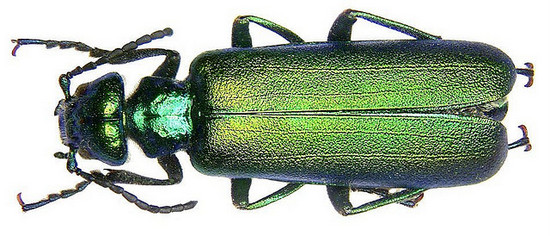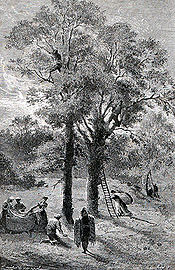The Bastille Archives are a treasure trove of information. This morning I discovered, for example, in a report by Reynie, the police chief, that the “love powders” being delivered by Voisin to Montespan—for use on the King (or perhaps by Montespan herself?)—contained “des cantharides,” more commonly known as “Spanish Fly.”
Ah. Love powders indeed.
Cantharidin powder was used in aphrodisiac sweets called pilles galantes, or pastilles de Richelieu, because the Duc de Richelieu offered them to his mistresses. In the 18th century, Madame du Barry, King XV’s mistress, was said to have called them pastilles de sérail (pastilles of the seraglio), taking them herself or giving them to young women to prepare them for amorous duty with the ageing King. In 19th century France, it was commonly available as philtre amoureux or love philtre. Sometimes the powder was dissolved in alcohol, producing a tincture.
“Before, she was common talk; now,
none dare say, cantharides can stir her.”
—1611, Beaumont
“Spanish Fly” is in fact neither Spanish nor a fly, but a “blister beetle” which has a chemical in its body that’s an irritant. When rubbed on the body it produces blisters (hence its name). When the dried, crushed body of the beetle is eaten, it causes inflammation of all the organs of the genital tract, including the genital organs. This gave rise to the believe that it was an aphrodisiac and could be used to treat impotence.
However, the swelling induced could be extremely painful, and the dose required to produce swelling was close to fatal. (A dose of only 10 milligrams can kill.) In women the powder could cause painful contractions of the uterus, and for this reason it was used to induce abortions.
It also caused a number of medical problems. It could cause permanent renal damage, for example (which casts suspicion, in my mind, on the King’s renal fistula later in his life). Over time, the kidneys would be damaged. The user (or, rather, abuser) would experience a dull, heavy pain in the loins, and have a constant desire to urinate (but passing only a small amount of blood-stained urine). After some time, convulsions occur followed by death within twenty-four hours.
The history of its use is long. The Roman empress Livia (58 B.C.-A.D. 29) slipped it into the food of members of the imperial family to cause them to commit sexual indiscretions that could later be used against them. In 1772, the Marquis de Sade gave sweet aniseed balls laced with Spanish Fly to prostitutes, who began to have uncontrollable vomiting, and died in agony a week later. In 1953, a fisherman accidently killed himself by pricking his thumb with a fish hook that had been dipped in a tincture containing the powder (which he believed would attract fish). The following year a man was convicted of killing two women by giving them coconut candies with cantharidin in them.
“You whoreson cantharides!” —1601, Ben Johnson
It had medical uses, as well. Cantharidin powder was believed to cure gout, carbuncles, rheumatism as well as a number of other medical disorders. Today it is used in the treatment of warts and in veterinary medicine in breeding farm animals.

Blister beetles would have been easy to acquire. They often swarm within alfalfa fields, and most often in fields next to weedy areas that are likely to contain an abundance of grasshopper eggs, on which they feed. They also can be found clustered on an evergreen shrub used for hedges, or olive, ash or elder trees.
By tradition, the beetles were gathered before sunrise while unable to fly. The collectors veiled their faces and hands before shaking them down onto cloths laid out on the ground. The beetles were then dried, and heated until they disintegrated into a fine powder, which has a bight green metallic lustre.
When swallowed, a person would experience a burning sensation in the throat and stomach, have difficulty swallowing, experience nausea and abdominal pain, vomit blood-stained material, feel an intense thirst, and have diarrhoea with traces of blood and mucus. Sometimes blisters form on the mouth and parts of the intestine.
All in all: not very romantic!




Dear Sandra:
Could you provide me the reference of the wonderful picture of a Lytta vesicatoria beetle?
http://www.sandragulland.com/wp-content/uploads/Spanish-FlyBad.jpg
Thanks in advance
Juan, It’s on Wikipedia:
https://commons.wikimedia.org/wiki/File:Lytta_vesicatoria_(Linné,_1758)_(4134136744).jpg
I see you posted this request over a year ago! I only learned of your question today. I hope you find this information helpful.
Cheers, Sandra